A Deep Dive into EX Pokémon Cards: Origins and Impact
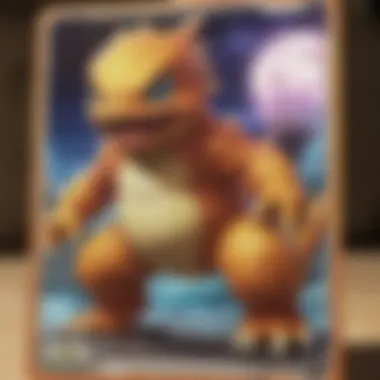
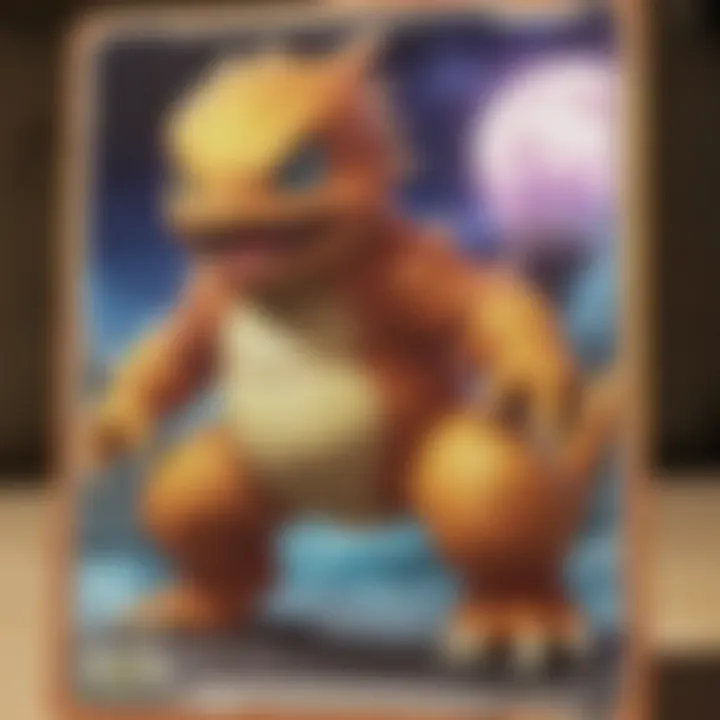
Intro
In the vast landscape of collectible card games, few categories capture the imagination and dedication of fans quite like EX Pokémon cards. These cards not only underscore the evolution of Pokémon gameplay but also reflect significant trends within the trading card market. As the Pokémon franchise has evolved, its collectible component had to keep pace, introducing various card types that have unique gameplay mechanics and artistry.
The EX cards have become a fixture within many players’ and collectors' portfolios alike. This section serves as a gateway into understanding the origins, gameplay relevance, and cultural significance of these cards. To fully appreciate the impact of EX Pokémon cards, one must delve into the broader context of the Pokémon game itself.
Pokémon Game Overview
History of Pokémon Games
Pokémon made its first splash in 1996 with the launch of the original video games, Pokémon Red and Blue, for the Game Boy. These games introduced players to a whimsical world filled with creatures that could be caught, trained, and battled. The success of these titles laid the groundwork for Pokemon Trading Card Game, which hit the market shortly thereafter in 1998. The card game brought an innovative twist, enabling fans to engage with their favorite Pokémon in a new medium.
Evolution of Gameplay Mechanics
As the Pokémon franchise grew, so did its gaming mechanics. The introduction of EX cards in the early 2000s marked a significant turning point in gameplay. Unlike standard cards, EX Pokémon had higher attack power but came with the downside of allowing opponents to draw two prize cards upon their defeat. This duality introduced new strategies, compelling players to reconsider how they built their decks and approached battles.
Gameplay mechanics have evolved significantly through various editions:
- Initial Phase: Focused on simple attacks and card collection.
- Advanced Mechanics: Introduction of effects, abilities, and gameplay complexity.
- EX Cards: Higher stakes with increased risk versus reward strategies.
Preamble to Different Game Versions
Across its long history, Pokémon has seen a myriad of game versions tailored to different platforms—from console titles to handheld devices and trading card adventures. The main series games continued to push boundaries with each new generation, introducing fresh Pokémon alongside expansions for the trading card game that kept player interest alive. The mechanics of the earlier games influenced how the EX cards would later be integrated and appreciated in the TCG scene.
The interplay between video games and card adaptations cannot be understated. Each new game iteration seems to spark excitement around the cards, with fans looking to incorporate their favorite Pokémon from the screen into their card battles.
"The Pokémon Trading Card Game is not just a pastime; it’s an evolving journey that intertwines collecting, strategy, and nostalgia."
In the upcoming sections, we'll explore the strategies behind effective gameplay with EX cards, spotlight key Pokémon that defined these cards, and keep you updated with the latest buzz in the Pokémon community.
Prolusion to EX Pokémon Cards
The realm of EX Pokémon cards offers a unique and compelling intersection of nostalgia, strategy, and collecting passion. These cards, introduced in the early 2000s, ushered in a new era for the Pokémon Trading Card Game. Understanding this segment is crucial for both collectors and players alike. It not only helps appreciate the intricate design and gameplay significance of EX cards, but also their historical evolution within the Pokémon universe.
Historical Context and Origins
The inception of EX Pokémon cards can be traced back to the introduction of the "EX" mechanic in 2003 with the Ruby and Sapphire expansion. This marked a pivotal moment in the development of the game, as these cards represented a shift toward more powerful, yet more strategic play styles. One could argue that these cards encapsulated a blend of innovation and nostalgia—their designs featured popular Pokémon while introducing unique mechanics that reshaped gameplay.
Before delving deeper into EX cards, it's essential to grasp the broader context of Pokémon's trading card history. The initial card game originated in 1996, and over the years, it have evolved in response to player feedback and competitive needs. With the EX series, fans welcomed a fresh dynamic, as these cards provided boosted attacks and abilities, alongside the risk of giving the opponent extra prize cards upon being defeated. This delicate balance of power and strategy meant that players had to alter their tactics significantly when incorporating EX cards into their decks.
Defining Characteristics of EX Cards
EX Pokémon cards are identifiable by their distinct artwork, game mechanics, and overall presentation. Key characteristics to note include:
- Higher Hit Points (HP): EX cards typically feature significantly higher HP, making them formidable opponents in battle.
- Powerful Abilities: They often possess unique abilities that can turn the tide of a game, allowing players to strategize around these heightened powers.
- Prize Card Benefit: When an EX card is knocked out, the opponent takes two prize cards instead of one, which adds an element of strategy and risk.
- Artistic Design: The visuals of EX cards are vibrant and eye-catching, often featuring full-art designs that showcase Pokémon in their most dynamic forms.
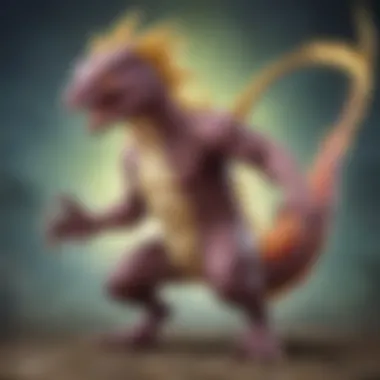

Through these attributes, EX cards have not only beautified card collections but also deepened the complexity of gameplay. Understanding these defining elements can lead to a richer experience for players and collectors alike. As we move forward, it’s essential to consider how these aspects have influenced design changes and market trends over the years.
The Evolution of EX Cards
The journey of EX Pokémon cards has been anything but static. Their evolution is pivotal to understanding the breadth of the Pokémon trading card game. This section dives into how these cards have changed over the years, both in design and in their collectibility. The transformation reflects broader shifts within the game, catering to an evolving audience while also enhancing the strategic complexity and enjoyment of play.
Design Changes Over the Years
Examining the design of EX cards reveals a significant evolution that is ingrained within the very fabric of the Pokémon TCG. Initially, EX cards were characterized by their sleek, eye-catching visuals, often showcasing iconic Pokémon in a way that highlighted their unique abilities. The first EX cards, like those from the Ruby and Sapphire series, brought forth a fresh art style that set them apart from previous iterations.
As time passed, we observed subtle yet impactful shifts in design philosophy. For instance, the introduction of full-art EX cards offered a new level of visual appeal, transforming the way collectors viewed these cards. The artwork took center stage, often stretching across the entire card, rather than being confined within traditional borders. This not only gave fans a more immersive experience with their favorite Pokémon but also established a marked trend towards prioritizing aesthetics.
Moreover, gameplay has influenced the designs in profound ways. Changes in attack mechanics and card functions have prompted designers to innovate. Cards like the Mega Rayquaza-EX introduced not just striking visuals but also intricate design elements that effectively communicated gameplay strategy. You can see how card abilities and strategies are reflected in their graphical representation. The include both the essence of the Pokémon and its competitive edge.
Rarity and Collectibility Trends
The realm of rarity and collectibility surrounding EX cards has shifted notably over the years, delighting some collectors while leaving others wistfully looking back at earlier editions. The concept of rarity has transformed with the market's fluctuations and fan dynamics. Early EX cards from the XY series, for example, were relatively easy to obtain. As interest surged, notably during competitive seasons, demand led to a scramble that saw certain cards skyrocket in value.
"The scarcity of certain EX cards can often lead to an inflated market, where enthusiasts are left navigating a veritable minefield of speculations and prices."
Limited edition releases have emerged as one measuring stick for rarity, often commanding sky-high prices at auctions and trading events. For instance, special promotional cards like Shiny Rayquaza-EX have joined the ranks of those the collector community covets. With availability being a constant theme—some cards simply aren’t reproduced—a nuanced understanding of these trends becomes essential for any serious collector.
Furthermore, the rise of online marketplaces and social media groups has altered the landscape. Platforms like reddit.com see collectors sharing insights on recent pricing trends, while community events often act as informal markets where transactions take place. This evolving dynamic adds layers of complexity, but can also cultivate a sense of connectedness among fans.
Gameplay Mechanics of EX Cards
The gameplay mechanics of EX Pokémon cards play a pivotal role in shaping the strategy and experience for players. These cards, distinct from their counterparts, bring unique aspects to the table that can tip the scales in competitive play. Understanding how these mechanics work is crucial not just for effective gameplay but also for grasping the evolution of the Pokémon Trading Card Game.
Impact on Game Strategy
EX cards often provide enhanced abilities and powers that can fundamentally alter a player’s approach. For instance, when an EX Pokémon is knocked out, the opponent takes two prize cards instead of one. This duality creates a calculated risk; players may opt for power-packed EX cards that can dominate a turn but do so at the risk of losing two crucial prize cards if they fall.
Some of the more strategic elements involve:
- High Damage Output: Many EX cards feature attacks that deal significant damage, often exceeding 200 HP with just a few energy cards attached. This can force opponents into tough decisions, especially when facing rapid, lethal attacks.
- Special Abilities: Many EX Pokémon come with abilities that can disrupt the opponent’s strategy. Take Rayquaza EX or Mewtwo EX, for instance; both have abilities that can significantly impact field management.
- Compatibility with Trainer Cards: The synergy between EX Pokémon and Trainer cards (like Item and Supporter cards) fosters powerful combos. This means players must construct decks that can leverage these relationships, maximizing damage potential while ensuring defensive measures are in place.
This impact isn’t just theoretical. In tournament settings, tactical choices made with EX cards can often lead to an advantageous position. Whether it’s a bold offensive or a cautious defensive play, the mechanics inject high stakes and excitement into matches.
Key Players and Deck Building
When it comes to building a deck, the strategic importance of EX cards cannot be overstated. Players need to consider not only the individual strengths of EX Pokémon but their compatibility with the overall deck strategy.
Deck building with EX cards typically involves several key considerations:
- Balancing EX and Non-EX Cards: Successful decks often feature a mix. While EX cards deliver raw power, non-EX cards can help maintain a steady pace by absorbing damage and keeping resources flowing. Some rare non-EX Pokémon can even offer critical support abilities.
- Trainers and Supporters: Integrating the right Trainer cards is a challenge that experienced players relish. Cards like Ultra Ball or N can provide essential draw power and search capabilities.
- Tech Pokémon: Including tech cards—those that may not be the stars of the deck but serve critical, situational roles—can bridge gaps that might be exploited by opponents.
Many players take an iterative approach, learning from each match and tweaking their decks after analyzing what works and what falls short. With the release of new sets, adapting the deck to complement the current metagame is essential.
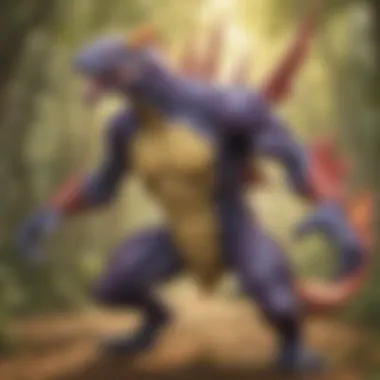

"The blend of strategy and anticipation when building around EX cards is one of the most rewarding aspects of the game. Every matchup holds a lesson!"
Analysis of Iconic EX Cards
Diving into the Analysis of Iconic EX Cards reveals their critical role in not only shaping the Pokémon Trading Card Game but also creating deep-rooted connections among players and collectors. These cards act as a bridge between gameplay mechanics and fandom, showcasing not just the strategic elements that define battles but also the art and design that fuel a community's passion. Understanding these iconic cards allows fans to appreciate their historical significance and the nuance of their abilities, as well as their visual appeal.
Notable Prolusions in the Series
When we talk about notable introductions within the EX series, several cards come to mind that have become legends in their own right. For instance, the Charizard EX card, initially launched in the EX FireRed & LeafGreen expansion, stands as a titan among collectors and players alike. Not only does it boast impressive attack power, but the nostalgic value associated with Charizard is unparalleled—it's like striking gold in a sea of silver.
Moreover, the Rayquaza EX card from the EX Dragon set made waves in both gameplay and collecting circles. This card's artwork captures the essence of its legendary status, while its abilities can change the tide of a match, leaving opponents reeling in its wake. These cards are just the tip of the iceberg; their designs and abilities set the tone for numerous expansions that followed.
Additionally, jargon and phrases like "game-changer" come to life when discussing Mewtwo EX, which introduced unique gameplay strategies that were previously unthought of. The EX designation added not only a level of prestige but also unique power dynamics to the TCG that affected how decks were built.
Limited Edition Releases
Limited edition releases have created intense buzz within the community, often driving prices through the roof. Cards like the Shiny Mewtwo EX or the Gold Star Rayquaza exemplify this phenomenon. These rare versions not only offer varied art that collectors salivate over but also pack a punch in competitive play.
Each limited edition card typically comes with a backstory, increasing its allure. For instance, the Mega Rayquaza EX from the Ancient Traits series was not just a card; it was an event. Released during a special promotion, it showcased the evolving mechanics of the game while also embodying the community’s growing love for mega evolutions.
However, not everything shiny is gold. Collectors often face challenges with fakes and reproductions, which can muddy the waters. So knowing what to look for—like specific serial numbers or holographic elements—becomes essential. This is where community forums and social media platforms like Reddit and Facebook help ensure collectors stay informed.
All said, the lore and history behind iconic cards and their limited editions create a rich tapestry that enhances the appreciation for the franchise while simultaneously fueling demand and fostering community. By exploring these elements, fans can better understand not just the cards themselves, but the culture surrounding them.
The Collector's Perspective
When discussing the world of EX Pokémon cards, one cannot overlook the intriguing viewpoint of collectors. This angle is crucial in understanding not just the history and design of these cards but their value in markets and the vibrant communities that exist around them. Collectors are often the stewards of card history, preserving unique pieces that reflect both nostalgic memories and the evolution of the Pokémon trading card game. For many, collecting is less about the monetary value and more about the joy of building a comprehensive collection, sharing their passion with others, and connecting with the broader community.
Valuation and Market Trends
The valuation of EX Pokémon cards can fluctuate like the wind, influenced by various factors. Card condition, rarity, popularity of the Pokémon featured, and current trends in the trading card game scene all play vital roles.
- Condition: The better the condition, the higher the price. Cards that are graded by professionals receive a score, which can substantially affect their market value. A mint condition card can fetch thousands, while one with noticeable wear might struggle to clear double digits.
- Rarity: Limited edition or holofoil variants often see heightened demand. These cards not only become elusive due to their production limits but also capture attention among enthusiasts looking for unique additions.
- Popularity: Some Pokémon characters fire the imagination of both collectors and players alike. A card featuring a beloved Pokémon like Charizard can rapidly ascend in value based on nostalgia and popularity within the community.
Understanding these market dynamics can be advantageous for collectors looking to make informed decisions either for trading, investment, or simply adding to their cherished collections.
Common Challenges in Collecting
Collecting EX Pokémon cards, while rewarding, is not without its hurdles. Several challenges can dampen the experience, making it essential for collectors to navigate these issues effectively.
- Authenticity: The market is replete with counterfeit cards, and distinguishing between the real McCoy and fakes can be a minefield. Collectors often need training in identifying authentic cards or rely on graded cards from reputable companies like PSA or Beckett.
- Knowledge Gap: The field of Pokémon collectibles can be overwhelming for a newcomer. Some cards have specialized knowledge that is hard to come by—knowing the value of specific cards might take years of collecting and research.
- Price Fluctuations: With the ever-changing market, what’s worth a pretty penny today could see a decline tomorrow. This unpredictability can be concerning for those who view collections as an investment.
- Space and Preservation: As collections grow, finding proper storage becomes imperative to maintain card condition. Some collectors struggle with the limited space available while trying to protect their prized possessions from damage.
Future of EX Pokémon Cards in Competitive Play
The future of EX Pokémon cards in competitive play holds great significance, not only for players but also for collectors and enthusiasts. As the game evolves, so do strategies and card designs, significantly influencing how the cards are used in tournaments and casual play alike. The importance of this topic lies in understanding how these cards will integrate with newer game mechanics, shifting metagames, and collector interests as they venture deeper into both traditional gameplay and virtual adaptations.
Emerging Card Designs and Concepts
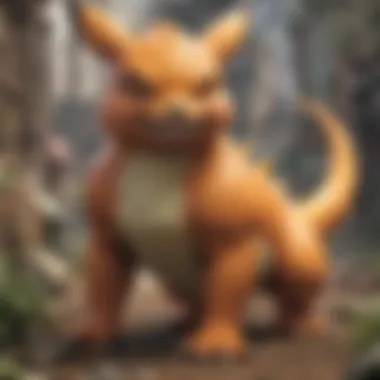
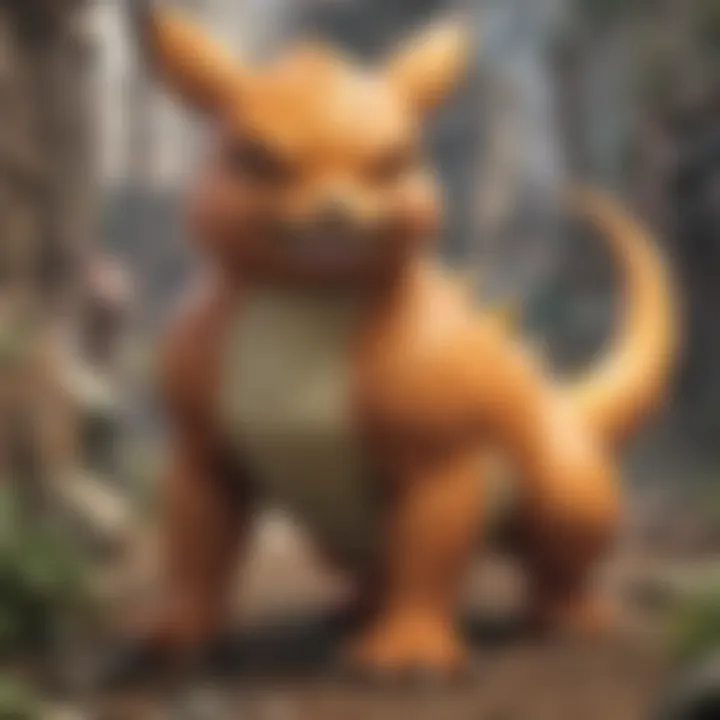
In examining the future, emerging card designs and concepts stand out as pivotal elements driving EX Pokémon cards into uncharted territories. Designers have been toying with new mechanics that blend classic gameplay with innovative features. For instance, the introduction of "dual-effect" EX cards, which could function with both offensive and defensive capabilities, is something many players eagerly anticipate. These designs are not just fanciful ideas; they can reshape how decks are constructed and played.
Moreover, the aesthetic evolution of cards also plays a role in their appeal. Enhanced artwork and creative themes can engage a broader audience—think of special collaborative sets that feature popular franchises. This can entice players eager to explore new synergies while simultaneously drawing in collectors who appreciate artistic expressions.
Predictions for Future Sets
Looking beyond current releases, predictions for future sets of EX Pokémon cards suggest that the gameplay landscape is set for transformation. Analysts in the Pokémon community highlight a few trends worth noting:
- Increased Integration of Technology: Expect to see cards that tie in with digital platforms, allowing for hybrid play styles that combine physical cards with digital gameplay.
- New Types of Energy or Synergy Cards: Future sets may introduce unique energy cards that lend themselves to special abilities, creating fresh strategic avenues for players.
- Continued Focus on Sustainability: Players and collectors are increasingly aware of environmental issues. There may be a shift towards more eco-friendly materials in card production, aiming to reduce the carbon footprint associated with collecting.
The future of EX cards is not merely about what happens on the tabletop; it's about embracing the new and innovative ideas that will breathe life into this beloved game.
To sum up, the future of EX Pokémon cards is a dynamic blend of emerging designs, innovative concepts, and market predictions. As both casual players and serious competitors prepare for change, they must keep an eye on how these cards will adapt to an ever-evolving gaming landscape. The excitement lies not just in what is available now but in what is yet to come.
Comparative Analysis: EX Cards vs Other Card Types
In the realm of Pokémon trading cards, EX cards hold a unique place, embodying specific gameplay mechanics and collector appeal. To truly understand their significance, one must consider how they compare with other card types like Standard cards, GX cards, and V cards. This analysis not only sheds light on the nuances of EX cards but contextualizes their role in competitive play and collecting habits.
Synergistic Relationship with Standard Cards
Exploring the interaction between EX cards and Standard cards is akin to looking at two sides of the same coin. While both types share a common foundation in gameplay, their functions and synergetic properties diverge in interesting ways.
- Deck Variety: EX cards enable players to unleash powerful Pokémon abilities that can dramatically shift the balance of a match. However, they usually come at a higher cost, not just in terms of resources, but also regarding the risk of a prize card being offered to the opponent when an EX card is knocked out. Standard cards, on the other hand, offer more flexibility and can fill gaps in a deck without compromising its stability.
- Interaction Dynamics: Many Standard cards are designed to enhance or provide support to EX cards, enabling combos that can lead to swift victories. For instance, some abilities or trainer cards focus on restoring or further empowering the EX Pokémon, creating a dynamic duo that players can leverage during competitions.
- Balanced Strategy: Integrating both EX and Standard cards encourages players to adopt a layered strategy. Achieving momentum with agile Standard Pokémon allows players to maintain board control while waiting for the opportune moment to unleash an EX card with its strong attacks.
Differences with GX and Cards
When comparing EX cards to GX and V cards, some important distinctions arise that can influence both gameplay and collecting strategies. It’s like comparing apples, oranges, and very ripe bananas; each comes with its own flavor and qualities.
- Core Mechanics: GX and V cards introduce new mechanics such as the GX attack, which can only be used once per game. This adds an additional layer of strategy, where timing is essential. EX cards lack this feature, creating a more straightforward approach without one-time dramatic moves but emphasizing more consistent power.
- Power Levels and Cost: Generally, GX cards boast higher damage output than EX cards for similar energy costs, offering an edge in competitive settings. Similarly, V cards have streamlined power levels designed to appeal to newer players while maintaining core gameplay appeal for veterans.
- Collector Appeal: From a collector’s view, EX cards have a nostalgic value that GX and V might not be able to replicate as they connect with the earlier phases of the Pokémon Trading Card Game evolution. Yet, the artistry, mechanics, and uniqueness of newer cards also attract a dedicated audience, making it a constant tug-of-war in the collecting community.
"The art of Pokémon TCG lies not only in the cards but in how they interact and create strategic depth. Understanding this enables richer gameplay and deeper appreciation for each card type."
The Role of EX Cards in the Cultural Landscape
The influence of EX Pokémon cards extends far beyond mere gameplay mechanics or collector interests. They have woven themselves into the fabric of the Pokémon culture, affecting community interactions, identity formation, and the overall enthusiasm surrounding the game. As we delve into this section, it's essential to consider how these cards serve not just as collectibles but as bridges between players, fans, and new enthusiasts.
Community Events and Competitions
Community events surrounding EX Pokémon cards have become a vital part of the Pokémon experience. Tournaments, local meet-ups, and conventions provide platforms for enthusiasts to showcase their decks and strategies. These gatherings foster a sense of belonging among players, creating bonds that go beyond the cards themselves.
- Tournaments: Competitive play often centers on EX cards, given their strategic significance. Local card shops frequently host tournaments where deck-builders can prove their skills and proficiency with these cards, creating a buzz in the community.
- Local Meet-ups: Many fans organize casual meet-ups, allowing players to trade cards, share tips, and discuss their experiences with EX cards. These gatherings enable players of all ages to interact and learn from one another, fostering inclusivity.
- Conventions: Events like Pokémon World Championships often feature EX cards prominently. At these high-profile competitions, players showcase their deck ideas, which often includes innovative strategies utilizing various EX cards. Participants are always keen to watch strategies unfold live, adding to the excitement.
These events not only enhance competitive spirit but also cultivate a thriving community animated by shared interests and camaraderie.
EX Cards as a Focal Point for Fandom
EX cards often transcend their roles as simple playing cards; they become symbols of identity for fans. For many, these cards represent not just a part of a game but a piece of personal history and nostalgia. This connection manifests in different ways, underscoring the impact of EX cards on fandom.
- Collective Identity: Fans frequently express affiliation with specific Pokémon or card types through their deck builds. For instance, someone proudly displays their Rayquaza EX as a token of strength, or a Charizard EX might signify a long-standing love for fiery Pokémon.
- Online Communities: Social media platforms such as Reddit and Facebook host groups dedicated to discussing strategies and sharing collections focused on EX cards. In these spaces, fans exchange stories and advice, building a closely-knit network.
- Crossover Appeal: The emotional attachment to EX cards often leads fans to engage with other forms of media, from video games to anime. This cross-pollination enriches the Pokémon experience and further cements EX cards as key icons within the fandom.
“EX cards are not just collectibles; they are narratives of personal journeys within the Pokémon universe.”
As we can see, the role of EX Pokémon cards in cultivating community ties and bolstering fandom cannot be overstated. They serve as both conversation starters and catalysts for engagement, shaping the artistic and competitive landscapes of the Pokémon world.







